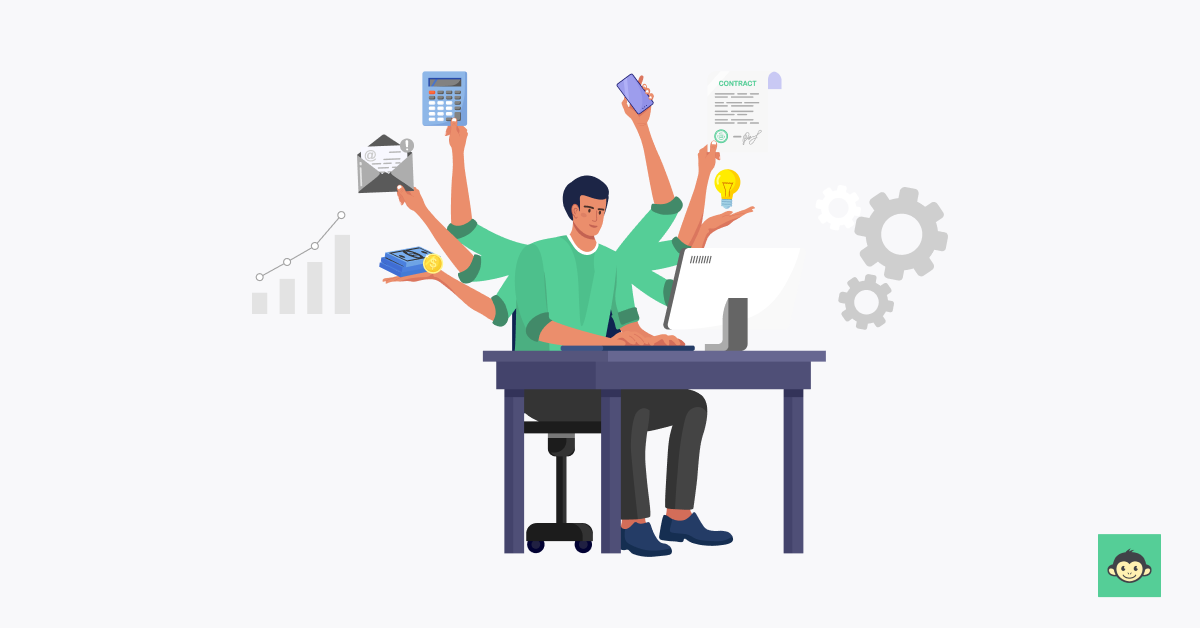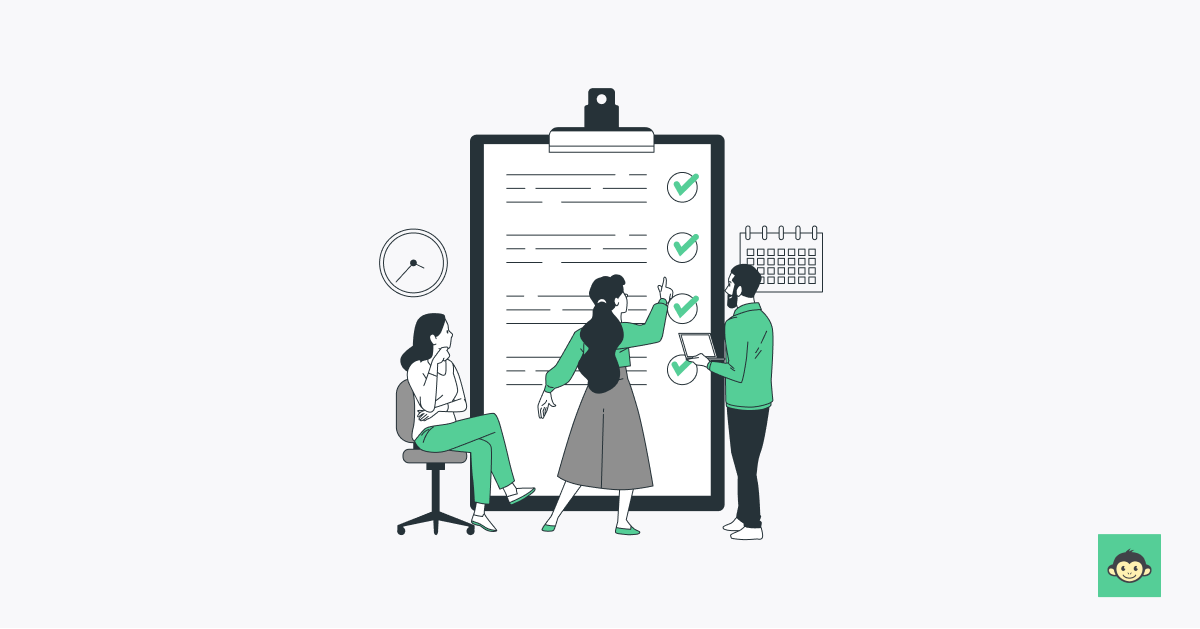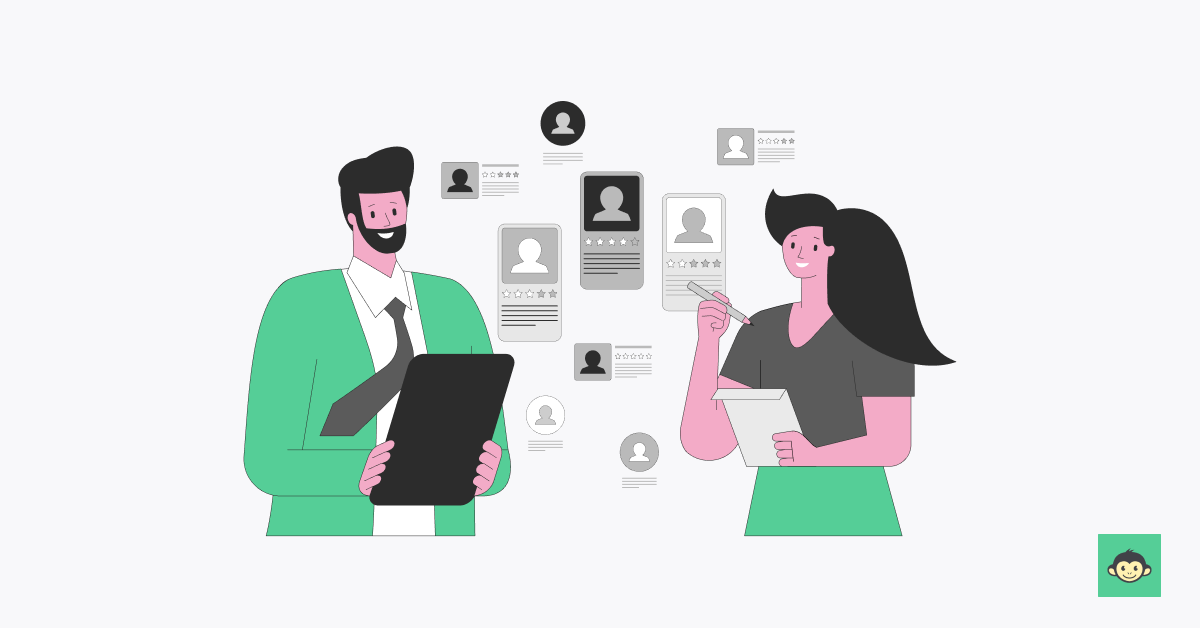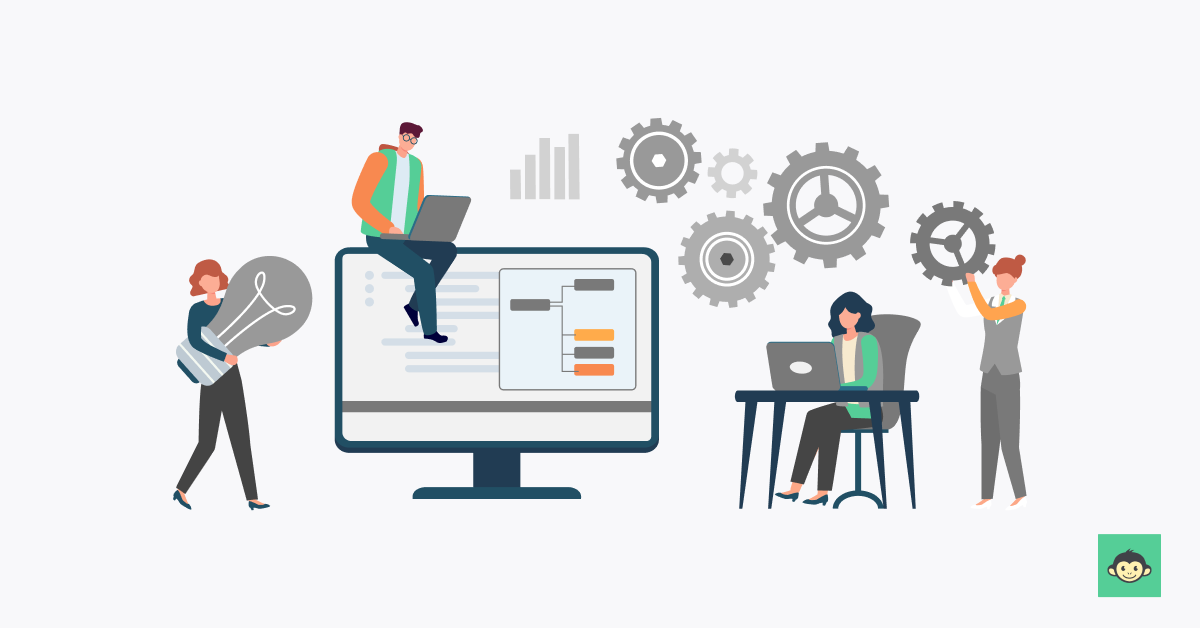What are people experience: Importance, top pillars, and strategies to try in 2024

Picture this: A workplace where employees don't just show up for the paycheck, but where they thrive, innovate, and collaborate with enthusiasm. That's the magic of People Experience (PX), and in 2023, it's your ticket to success in the ever-evolving business world.
People experience is the compass guiding organizations towards a brighter, more prosperous future. It's the art of crafting an environment where people aren't just assets but the driving force behind innovation and growth!
So, fasten your seatbelts and get ready to delve into the captivating world of People Experience – where a happy, engaged workforce isn't just a dream but a tangible reality that can transform your business beyond your wildest expectations.
What does people experience mean?

People experience, often referred to as PX, is no ordinary workplace jargon; it's the nucleus of modern organizational dynamics. But what exactly does this term entail?
In its essence, People experience is the harmonious blend of culture, engagement, well-being, and growth within an organization's framework. It transcends the conventional view of employees as mere components in a corporate machine and acknowledges them as exceptional individuals, each with distinct desires, ambitions, and talents.
PX, at its heart, revolves around building a habitat where these unique individuals find themselves valued, nurtured, and ignited to unleash their full potential. It supports employees through all stages of the employee lifecycle.
It's the radiant smile that graces an employee's face upon entering their workplace, a place that respects the sanctity of their work-life equilibrium. It's the thrill of embarking on a journey of learning and growth within their role, reassured that their personal and professional development is a top priority.
It's the sensation of being not just heard but celebrated, receiving feedback that serves as a stepping stone on an employee journey toward progress and excellence.
In essence, People experience is the art of molding a workplace that resonates with the human aspect of work. It transforms the office into a second home, where every individual feels like an indispensable thread in the tapestry of a purpose-driven community.
People experience vs employee experience

But wait! If you’ve been following our other blogs, you’ve likely come across the phrase ‘employee experience’. Well, what’s the difference? Or are they the same thing? Let’s dive into the nuances that might set them apart.
People experience: PX is a holistic approach that goes beyond viewing employees as mere workers. It encompasses the entire ecosystem, acknowledging that individuals have diverse lives, passions, and aspirations both inside and outside the workplace.
It strives to create an environment where employees are not just satisfied but truly engaged, fostering their overall well-being. PX takes a long-term perspective, emphasizing culture, leadership, and personal growth.
Employee Experience (EX): Employee experience, on the other hand, primarily concentrates on the employees experience and the specific employee journey within the organization. It encompasses the various touchpoints an employee encounters from recruitment to departure.
Employee experience focuses on job satisfaction, work environment, and the immediate experiences an employee has in their role. It often aims to enhance productivity and employee retention in the short term.
To put it simply, PX is the bigger picture, considering the entire employee's life, while employee experience zooms in on the day-to-day experiences and interactions within the workplace.
In your 2024 plan, understanding the distinctions between these two concepts and striking a balance between them will be pivotal in making a thriving, sustainable, and excellent employee experience-centric organization.
With the PX and EX distinctions in mind, let's dive deeper into what makes a People experience strategy and how it can reshape your 2024 approach.
What is a people experience strategy?
A People experience plan is the compass that guides your organization towards fostering an environment where employees not only work but thrive. Let's delve deeper into the crucial elements:
Understanding your workforce
To create a PX plan that resonates, you need to know your employees inside out. This involves more than just understanding their roles; it's about comprehending their unique needs, aspirations, and pain points.
Conduct surveys, one-on-one interviews, and leverage HR analytics to gather insights. For instance, if your analysis reveals a desire for flexible work hours, consider implementing remote work policies or flexible schedules.
Cultural alignment
If your company values innovation, your PX plan should encourage and celebrate creativity and idea sharing. This alignment ensures that your PX isn't just a set of guidelines but a natural extension of your company's core values.
Leadership buy-in
A top-down approach is crucial for your PX plan. Your leadership team must be fully committed to building a positive workplace culture. Their willingness to lead by example and champion the values and goals of your PX blueprint sets the tone for the entire organization.
Personalized approach
Recognize that not all employees are the same, and one-size-fits-all approaches don't work. Tailor your PX blueprint to cater to the unique needs of different employee segments.
Younger employees might prioritize career growth opportunities, while older ones might seek a better work-life balance. Customize experiences, and this will show that you respect and value each individual's contributions.
Feedback mechanisms
Implementing feedback mechanisms is essential for the ongoing improvement of your PX plan. Regular surveys, focus groups, and check-ins provide valuable insights into employee satisfaction and help you make necessary adjustments.
Encourage open and honest feedback to keep the blueprint dynamic and responsive to evolving employee needs.
Learning and development
A strong PX blueprint prioritizes personal and professional growth opportunities. Offer a range of learning and development initiatives, such as training, mentorship programs, and skill-building workshops. This fosters an environment where employees can continuously enhance their abilities and advance their careers.
Well-being initiatives
Recognize the importance of well-being. Create a workplace that promotes both physical and mental health. Provide access to fitness facilities, mental health resources, or wellness programs. A focus on well-being helps employees maintain a healthy work-life balance, reducing stress and burnout.
Recognition and rewards
Implement a structured system for recognizing and rewarding employee achievements. Whether it's through public praise, bonuses, or other incentives, acknowledging and rewarding outstanding contributions motivates employees and reinforces their commitment to the organization's goals.
Communication and transparency
Open, transparent communication is the bedrock of any successful PX plan. Employees should be well-informed about company goals, changes, and their role in achieving these objectives.
Regular updates, town hall meetings, and accessible channels for asking questions or providing feedback ensure that information flows freely throughout the organization.
Evolving with trends
A forward-thinking PX blueprint keeps pace with evolving workplace trends and technologies. Embrace new tools and methods, such as AI-powered HR analytics, to enhance your plan.
Staying current with the latest innovations ensures key moments that matter and your PX approach remains effective and competitive in the ever-evolving world of work.
In 2024, a People experience plan isn't just going to be a desirable addition; it's an absolute necessity for attracting and retaining top talent, enhancing productivity, and securing the long-term growth of your organization.
Why is people experience important?

PX isn't just about making employees feel good or checking a box on a corporate checklist. It's about recognizing the profound impact a well-crafted PX plan has on your organization's ability to attract, engage, and retain top talent.
By acknowledging the individuality of your workforce, understanding their unique needs, and crafting an environment where they thrive, you're not just making a happy workplace; you're building a resilient, innovative, and profitable business.
Attraction and retention of top talent
PX plays a pivotal role in attracting and retaining top-tier talent. In a competitive market, candidates are looking for more than just a paycheck. They seek workplaces where they can grow, find purpose, and be part of a vibrant community.
Boosting productivity and innovation
Engaged and satisfied workers are naturally more productive and innovative. They're invested in the success of the organization, leading to higher efficiency and the birth of groundbreaking ideas.
Gallup's data reveals that companies with highly engaged workers are 21% more profitable—a testament to the tangible benefits of a strong PX plan.
Competitive advantage
In an era where businesses are constantly vying for market share, PX becomes a potent differentiator. A workplace that values its employees' experiences not only attracts customers but also retains them. Happy, engaged workers provide a better customer experience too, contributing to a significant competitive advantage.
Reduced turnover and costs
High employee turnover is not just disruptive; it's expensive. Replacing an employee can cost companies up to 33% of their annual salary. A robust PX plan keeps turnover rates low, saving companies both time and money in recruitment and training.
Positive workplace culture
A workplace that prioritizes PX naturally fosters a positive culture. When workers feel valued, they reciprocate with increased loyalty, commitment, and a willingness to go the extra mile. This positive culture ripples through the organization, affecting every other person and facet of your operations.
Emotional well-being
PX isn't just about professional growth; it's also about personal well-being. By addressing mental and emotional health, a PX plan contributes to a healthier, more resilient workforce. A mentally fit employee is more likely to excel in their role.
Adaptability to market changes
In an ever-changing business landscape, adaptability is key. A PX plan that listens to and evolves with employee needs equips your organization to navigate market fluctuations and industry transformations more effectively.
Ethical and social responsibility
Today's workers are increasingly aware of ethical and social responsibility. A PX plan that emphasizes corporate social responsibility and sustainability can resonate with these values, making your organization more attractive to potential hires who align with these principles.
Continuous learning and development opportunities
A robust PX plan recognizes the importance of continuous learning and development. It provides employees with opportunities to enhance their skills, stay updated with industry trends, and adapt to evolving job requirements.
This commitment to growth not only benefits individual employees but also contributes to the overall success and competitiveness of the organization.
Enhanced employee well-being programs
PX extends beyond traditional benefits by focusing on comprehensive well-being programs. This includes initiatives such as stress management, fitness programs, and work-life balance support. Prioritizing employee well-being not only fosters a healthier work environment but also leads to increased job satisfaction and sustained productivity.
Inclusive and diverse workforce
A people-centric approach in PX emphasizes the importance of inclusivity and diversity. Organizations that prioritize creating an inclusive workplace, valuing diverse perspectives and backgrounds, not only contribute positively to society but also harness the creative power that comes from a varied and dynamic workforce.
This inclusivity enhances innovation and problem-solving within the organization.
Enhanced employee recognition and rewards
Acknowledging and appreciating employees for their contributions is a crucial aspect of PX. Recognition programs that go beyond monetary rewards, including praise, acknowledgment, and personalized incentives, reinforce a positive work culture.
Employees who feel valued are more likely to remain engaged, motivated, and loyal to the organization.
Technology integration for seamless work experience
A forward-thinking PX plan embraces technology to enhance the overall work experience. From streamlined communication platforms to user-friendly HR systems, integrating technology not only boosts efficiency but also demonstrates the organization's commitment to providing a modern and adaptable workplace.
This tech-savvy approach aligns with the expectations of today's workforce and positions the company as a leader in the digital age.
In 2024, People experience isn't merely a trendy concept; it's an integral part of your organization's story. By investing in PX, you create a workplace that attracts, retains, and empowers workers, ultimately steering your organization toward a brighter and more prosperous future.
What are the 7 pillars of employee experience strategy?

A well-structured people experience strategy is built upon four foundational pillars that are essential for fostering a thriving and engaged workforce. These pillars form the framework for an organization's approach to managing its most valuable asset: its people.
Let's delve into the four pillars of people strategy:
1. Recruitment and talent acquisition
This pillar focuses on attracting and selecting the right talent for the jobs in your organization. It includes strategies for building appealing job descriptions, sourcing candidates, conducting effective interviews, and making job offers.
A strong recruitment and hiring process ensures that your organization brings in individuals who are a good fit for their jobs, the company culture and its goals.
2. Employee development and learning
Employee development and learning are essential for nurturing and growing the skills and competencies of your workforce.
This pillar encompasses training programs, mentorship opportunities, performance reviews, and ongoing skill enhancement. A robust learning and development plan empowers employees to reach their full potential and contributes to the org success.
3. Performance management and feedback
This involves setting expectations, tracking progress, and providing feedback to both people managers and workers. It includes regular performance evaluations, succession planning, goal setting, and constructive feedback mechanisms.
Effective management not only ensures that workers are aligned with organizational objectives but also fosters a culture of continuous improvement and accountability.
4. Employee engagement and well-being
The well-being and engagement of workers are at the heart of this pillar. It encompasses efforts to create a positive work environment, including well-being initiatives, recognition programs, employee journeys, and opportunities for workers to be heard and involved in decision-making.
Prioritizing employee engagement and well-being leads to a more satisfied and motivated workforce.
5. Diversity, Equity, and Inclusion (DEI) strategies
In today's diverse workplace, a people strategy must include initiatives to foster diversity, equity, and inclusion.
This pillar focuses on creating an environment that values and respects individual differences, ensuring fair opportunities, and promoting a sense of belonging for everyone. DEI strategies contribute to a more innovative and harmonious workplace.
6. Succession planning and leadership development
This component involves identifying and developing internal talent to fill key leadership positions within the organization. Succession planning ensures a smooth transition in critical roles, reducing disruptions and maintaining organizational continuity.
Coupled with leadership development programs, it cultivates a pool of capable leaders who can guide the organization toward future success.
7. Flexible work policies and work-life integration
As work dynamics evolve, incorporating flexible work policies and promoting work-life integration becomes crucial. This pillar focuses on providing employees with the flexibility to balance work and personal responsibilities.
Such policies contribute to employee satisfaction, retention, and a good work-life balance, fostering a positive organizational culture.
What is a positive employee experience?
A positive employee experience is a dynamic blend of job satisfaction, engagement, and motivation that fosters a deep sense of belonging and purpose.
In a workspace characterized by a positive EX, workers find their roles not only fulfilling but also aligned with their personal and professional aspirations.
They encounter meaningful work that resonates with their values and contributes to the organization's mission. It's the difference between simply getting through the workday and eagerly anticipating each day's challenges.
A positive EX extends beyond the scope of tasks and responsibilities. It encompasses opportunities for continuous learning and growth, ensuring that workers can evolve in tandem with the organization's evolving needs.
They are not just seen as contributors to everyday tasks, but as partners in the journey towards success.
Moreover, it's a sense of community that permeates every corner of the workplace, where workers feel appreciated and connected. In such an environment, diversity is celebrated, and inclusion is a guiding principle.
Ultimately, a positive EX is the lifeblood of a workplace where workers don't just meet expectations but exceed them, contributing enthusiastically to the organization's growth and innovation.
It's an investment that pays dividends through higher productivity, employee retention, and an organization that stands out in a competitive landscape.
How to improve people experience at your organization 5 top strategies to try?

In today's competitive job market, providing a positive and enriching people experience is essential for attracting, retaining, and motivating top talent. An organization's success is intricately tied to the well-being and satisfaction of its employees.
To enhance people experience within your organization, consider implementing these five top strategies:
1. Personalized employee development plans
Tailor development plans to the individual needs and goals of your workers. Identify their strengths and areas for growth and provide training, mentorship, and learning opportunities that align with their aspirations.
This empowers them to advance their careers within the organization and fosters a sense of value and investment in their growth.
2. Flexible work arrangements
Embrace flexible work arrangements, such as remote work options, flexible hours, or compressed workweeks. The ability to balance work with personal life is a top priority for many employees. Providing flexibility not only boosts PX but also enhances work-life balance, reducing stress and burnout.
3. Recognition and appreciation programs
Implement a structured system for recognizing and appreciating employee contributions. This can include regular recognition events, awards, and peer-to-peer recognition programs. Acknowledging and celebrating achievements fosters a positive work environment and reinforces the value placed on workers' efforts.
4. Inclusive and diverse initiatives
Promote diversity and inclusion throughout the organization. Develop initiatives that celebrate differences, including employee resource groups, diversity training, and inclusive hiring practices. PX is greatly enhanced when workers feel their unique backgrounds and perspectives are not only respected but also celebrated.
5. Enhanced communication and feedback
Establish a culture of open communication and feedback. Regularly seek input from workers through surveys, focus groups, and one-on-one meetings. Use this feedback to make informed decisions that improve the company, workplace, and employee experience.
These five strategies can serve as a solid foundation for enhancing PX at your organization. By personalizing development, providing flexibility, recognizing contributions, promoting diversity, and fostering open communication, you'll be well on your way to creating a workplace where workers thrive and feel valued and motivated to contribute their best.
As you embark on the employee journey to enhance People experience at your organization, it's crucial to have the right tools and insights at your disposal. One of these essential tools is the People experience survey.
What is a people experience survey?

A People experience survey is a structured and comprehensive assessment tool designed to gauge the overall well-being, engagement, and satisfaction of workers within an organization.
It provides a platform for workers to candidly express their views on various aspects of their workplace, including culture, leadership, work-life balance, learning and development opportunities, and overall job satisfaction.
The survey typically includes a series of questions that touch on these key areas, allowing workers to rate their experiences, provide comments, and suggest improvements.
The responses collected in these surveys are invaluable for organizations as they provide insights into the strengths and weaknesses of the People experience they offer.
7 Types of people experience surveys you should know

When it comes to improving People experience in your organization, surveys are an invaluable tool. These surveys provide insights into employee sentiments, helping you understand what's working and needs improvement. Here are seven types of People experience surveys that you should be familiar with:
- Employee engagement surveys: Employee engagement surveys measure the emotional commitment and motivation of your employees. They assess factors like job satisfaction, alignment with the company's values, and enthusiasm in their roles.
- Pulse surveys: These are short, frequent surveys conducted more regularly (e.g., weekly or monthly) to capture real-time feedback on specific topics or life events. Pulse surveys help identify emerging issues and monitor changes in employee sentiment.
- Onboarding surveys: Conducted during the onboarding experience, onboarding surveys collect feedback from new hires about their experiences, ensuring a positive introduction to the company.
- Exit interviews: While not technically a survey, exit interviews are crucial for understanding why employees leave the organization. The insights gained can inform retention strategies.
- 360-degree feedback surveys: These surveys collect input from an employee's peers, subordinates, and superiors, providing a well-rounded view of their performance and behavior.
- Diversity and inclusion surveys: These surveys assess an organization's efforts in promoting diversity and inclusion. They help identify areas for improvement and evaluate the effectiveness of related initiatives.
- Well-being surveys: Focusing on the physical and mental well-being of employees, these wellbeing surveys help organizations address stress, burnout, and overall wellness concerns, fostering a healthier workplace.
Each of these survey types serves a specific purpose in enhancing PX by pinpointing areas that require attention and gauging the impact of ongoing initiatives. Combining these surveys can provide a holistic view of your organization's People experience and guide strategic improvements.
What are examples of people strategy?
People strategy is a critical component of any organization's success. It's a holistic approach that focuses on the development, engagement, and well-being of employees to achieve business goals.
A well-crafted people strategy takes into account the unique needs and aspirations of the workforce. Here are some examples of people strategy initiatives that forward-thinking companies often implement:
- Mentorship programs: Implementing mentorship initiatives with former employees can be part of a People plan to foster career growth and knowledge sharing within the organization. These programs connect experienced employees with less experienced ones to provide guidance and support.
- Recognition and rewards programs: Acknowledging exceptional employee performance can be a strategic aspect of a People plan. Organizations may introduce rewards such as gift cards, additional vacation days, or even public recognition to motivate, engage and retain employees.
- Innovation and idea cultivation: Encouraging employees to contribute to the wider organization''s innovation and growth can be a critical People plan. This might for example involve dedicated channels for employees to share ideas, for example through innovation contests, or innovation labs.
- Career pathing: Defining clear career paths and opportunities for advancement within the organization is essential. A People plan can include programs that outline potential career trajectories and provide the necessary training and development to help employees progress.
- Knowledge sharing platforms: Creating internal platforms where employees can easily share knowledge, resources, and best practices can be part of a People plan. This promotes continuous learning and collaboration.
- Health and wellness initiatives: A strategic focus on employee health and wellness can encompass benefits like gym memberships, stress management programs, and initiatives to improve overall well-being.
- Flexible benefits: Tailoring benefits packages to meet individual employee needs is an emerging trend among employers. This might involve employers allowing employees to choose specific benefits, such as health plans or retirement contributions, to suit their circumstances.
- Hybrid work strategies: With the rise of remote work, a People plan might involve creating a plan for hybrid work arrangements that provide flexibility while maintaining productivity and employee engagement.
- Leadership development programs: Implementing leadership development programs is essential for identifying and nurturing future leaders within the organization. These programs focus on providing training, mentorship, and opportunities for growth to individuals displaying leadership potential.
- Employee Resource Groups (ERGs): Establishing Employee Resource Groups that celebrate diversity and inclusion is a key element. ERGs provide a platform for employees to connect, share experiences, and contribute to a more inclusive workplace.
- Succession planning: Incorporating succession planning initiatives is critical for ensuring a pipeline of skilled individuals who can seamlessly fill key roles within the organization. This involves identifying and developing internal talent to meet future leadership needs.
- Continuous feedback mechanisms: Implementing regular and constructive employee feedback mechanisms is vital. This involves creating a culture of ongoing performance discussions, enabling employees to receive timely input and fostering a culture of continuous improvement.
- Technology integration for employee experience: Leveraging technology to enhance the employee experience is a contemporary approach. This includes user-friendly HR systems, communication platforms, and employee engagement tools that streamline processes and communication, ensuring a modern and efficient work environment.
These examples showcase the complex workforce ever-evolving nature of People plan, reflecting the changing demands and expectations of the modern workforce. A strategic approach to people management is vital to how business leaders meet these evolving needs effectively.
What is employee performance feedback?

Employee performance feedback is a systematic and constructive process through which employers communicate assessments of an employee's work, providing insights into strengths, areas for improvement, and overall contributions to the organization.
This structured evaluation is an integral aspect of performance management, aiming to enhance individual performance, align goals with organizational objectives, and foster a culture of continuous improvement.
The primary purpose of employee performance feedback is to establish clear expectations, recognize achievements, and address developmental areas. It is a two-way communication mechanism where managers provide valuable insights into an employee's performance, highlighting accomplishments, exemplary behaviors, and areas requiring refinement.
This process contributes significantly to the employee's understanding of their role within the organization and provides a roadmap for career development.
Constructive feedback is a cornerstone of this process, emphasizing specific examples to illustrate performance. By offering actionable suggestions and recognizing achievements in a formal setting, employees gain a comprehensive understanding of their impact on the organization.
Effective feedback is timely, specific, and future-oriented, facilitating a forward-looking approach to professional development.
Regular performance feedback not only aids in individual growth but also plays a pivotal role in organizational success. It enables managers to align individual goals with broader company objectives, ensuring a cohesive and synergistic workforce. Moreover, it establishes a culture of accountability and transparency, fostering employee engagement and satisfaction.
Is people experience the same as HR?

People Experience (PX) and Human Resources (HR) are related yet distinct facets within an organization, each playing a crucial role in shaping the workplace environment and fostering employee satisfaction. While both are integral to managing the workforce, they differ in their scope, focus, and overall objectives.
Human Resources traditionally encompasses the administrative functions associated with managing personnel, such as recruitment, compensation, benefits administration, and compliance.
HR is often viewed as a more transactional and compliance-oriented department, ensuring adherence to policies, and regulations, and the efficient execution of day-to-day HR operations.
On the other hand, People Experience goes beyond the transactional aspects of HR, concentrating on the holistic journey of employees within the organization.
PX is concerned with creating an environment where employees not only fulfill their professional responsibilities but also thrive and find fulfillment in their work. It emphasizes the overall employee experience, encompassing culture, engagement, well-being, and career growth.
In essence, HR is a component within the broader spectrum of People's Experiences. While HR deals with the procedural and regulatory aspects of workforce management, PX delves into the emotional and experiential dimensions, focusing on creating a workplace that values individual contributions, encourages personal growth, and promotes a positive and inclusive culture.
What does a people experience specialist do?

The role of a People Experience Specialist is pivotal in creating an environment where employees not only thrive professionally but also find fulfillment in their workplace journey.
This specialist is instrumental in shaping and maintaining a positive and enriching workplace culture. Let's delve into the key responsibilities and functions associated with this significant role.
- Crafting a positive workplace culture: People Experience Specialists are instrumental in fostering a positive workplace culture that aligns with the organization's values and goals. They work towards creating an inclusive and collaborative atmosphere where employees feel valued and motivated.
- Employee engagement initiatives: Developing and implementing strategies to enhance employee engagement is a core responsibility. This involves organizing events, surveys, and programs that encourage team collaboration, communication, and a sense of belonging.
- Well-being programs: People Experience Specialists prioritize the well-being of employees by designing and overseeing initiatives such as wellness programs, stress management workshops, and mental health support systems.
- Onboarding and integration: Facilitating a smooth onboarding process for new hires is crucial. Specialists ensure that newcomers feel welcomed, receive comprehensive introductions to company culture, and swiftly integrate into their roles.
- Continuous learning and development: Supporting employees in their professional growth is another key responsibility. This involves collaborating with HR to create learning and development programs, mentorship initiatives, and opportunities for skill enhancement.
- Feedback mechanisms: Implementing effective feedback systems is vital. Specialists establish mechanisms for regular feedback, ensuring open communication channels between employees and management.
- Diversity, Equity, and Inclusion (DEI) initiatives: Promoting diversity, equity, and inclusion within the workplace is a critical aspect. Specialists work towards creating an environment that values and respects individual differences.
- Recognition programs: Acknowledging and appreciating employee contributions is integral. Specialists design and implement recognition programs that celebrate achievements, fostering a culture of appreciation.
- Employee journeys: Mapping and understanding the employee journey is essential. Specialists analyze various touchpoints, identifying opportunities for improvement and enhancement.
- Crisis management: In times of organizational challenges or crises, People Experience Specialists play a pivotal role in maintaining employee morale, providing support, and ensuring transparent communication.
- Technology integration: Leveraging technology for enhanced employee experience is a modern focus. Specialists explore and implement innovative tools and platforms to streamline processes and communication.
- Community building: Nurturing a sense of community within the organization is vital. Specialists organize events, forums, and activities that facilitate connections among employees.
- Measuring and analyzing metrics: Regularly assessing the effectiveness of People Experience initiatives is crucial. Specialists utilize metrics and data analysis to gauge employee satisfaction, engagement levels, and the overall impact of their programs.
How can a people experience platform help you improve your overall employee experience?

A PX platform (PXP) can be a game-changer in enhancing your overall Employee Experience (EX). Here's how it can do so:
- Centralized data and insights: A PXP aggregates data from various sources, including employee surveys, feedback, performance reviews, and more. This centralization provides a comprehensive view of critical moments of the employee experience, allowing organizations to identify trends, areas for improvement, and opportunities to enhance EX.
- Personalized experiences: With the help of data analytics, a PXP can offer personalized experiences for employees. It can suggest learning and development opportunities, career paths, and well-being resources tailored to individual preferences and needs.
- Feedback and continuous improvement: PXP platforms enable real-time feedback collection, allowing employees to voice their concerns and suggestions. This feedback loop empowers organizations to make necessary changes promptly, fostering a culture of continuous improvement.
- Recognition and rewards: PXP platforms often include features for recognizing and rewarding employees for their achievements. This can boost morale, motivation, and a sense of appreciation among employees.
- Performance management: A PXP helps streamline management processes. It allows for setting clear goals, regular evaluations, and tracking progress, creating a more efficient and effective business performance and management system.
- Employee self-service: These platforms often offer the access and self-service options for employees to access important HR information, benefits, and resources, reducing administrative burdens and improving employee convenience.
- Employee well-being: Many PXPs incorporate features to support employee well-being, including resources for physical and mental health, stress management, and work-life balance.
- Employee engagement, community and collaboration: Some platforms facilitate employee engagement through social and collaborative features. These encourage teamwork, knowledge sharing, and building a sense of community within the organization.
- Learning and development: PXPs often include tools for tracking employee learning and development progress. This can help employees set and achieve career growth goals.
- Data-driven decision-making: By providing valuable data and insights, a PXP empowers organizations to make informed, data-driven decisions. This ensures that strategies to improve EX are grounded in evidence.
People experience is at the heart of any thriving workplace. By centralizing data, enabling personalization, and streamlining management processes, PX is elevated to new levels! This approach empowers organizations to create an environment where employees truly thrive, fostering engagement, productivity, and fulfillment.
Consider embracing this approach as it’s the pathway to a data-driven, people-centric future where PX becomes the driving force behind a thriving, innovative, and harmonious workplace. Give our platform a try!
But here's the masterstroke to heighten your people experience initiatives—CultureMonkey's employee engagement survey platform. With its intuitive design, data-driven insights, and tailored features, CultureMonkey is your compass in the quest to create an exceptional people experience.
Whether you're fine-tuning your recruitment, enhancing employee development, or strengthening your engagement strategies, CultureMonkey equips you with the tools and insights to make it happen.



